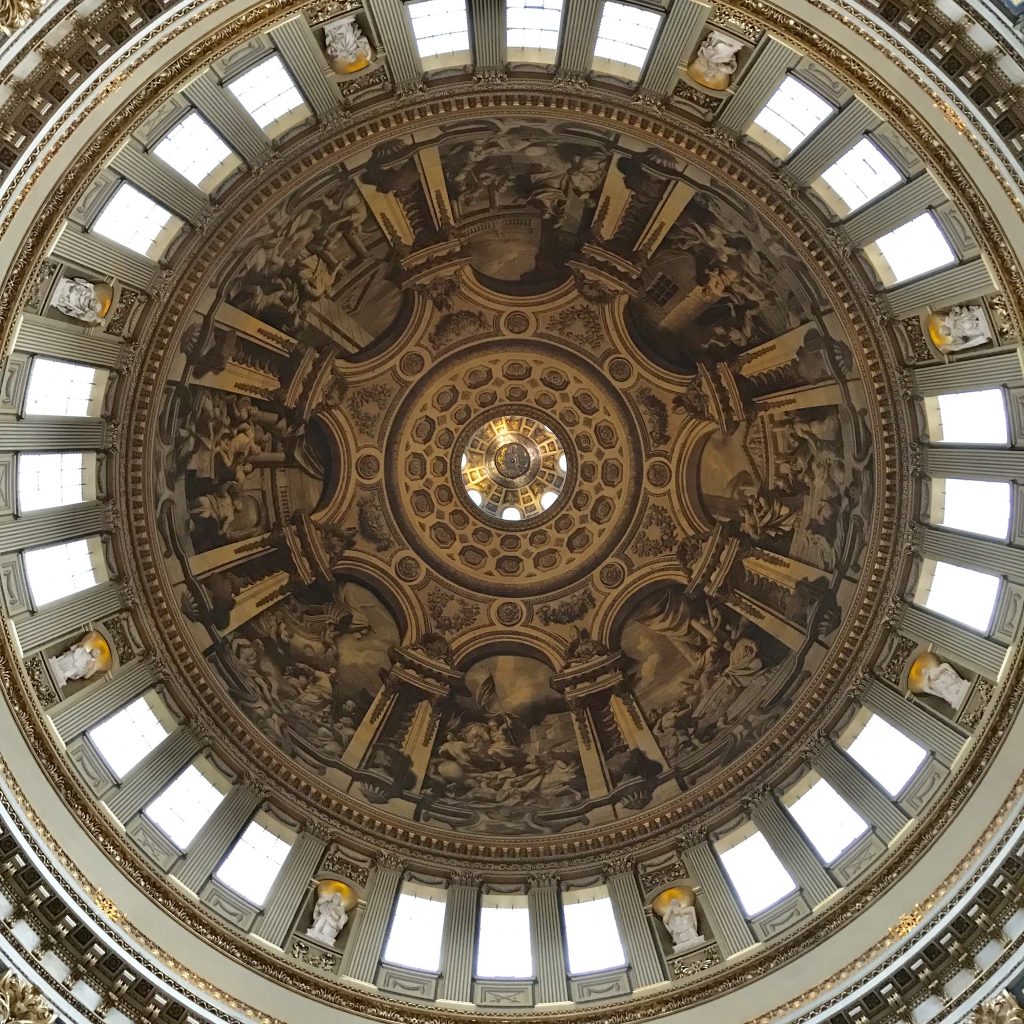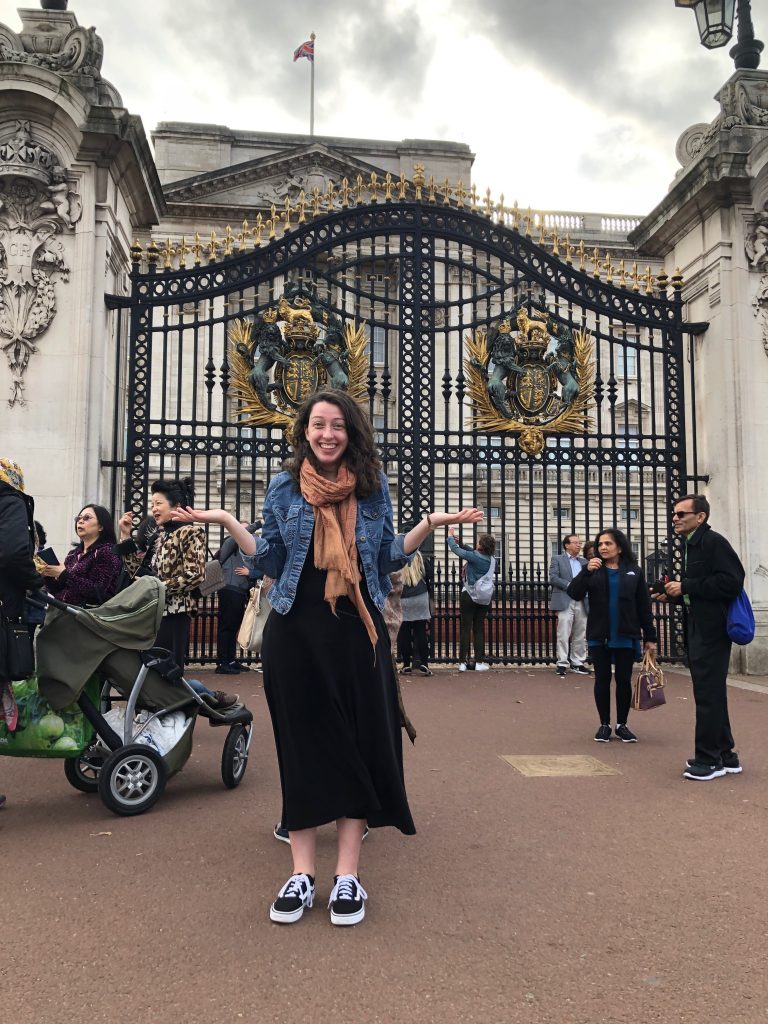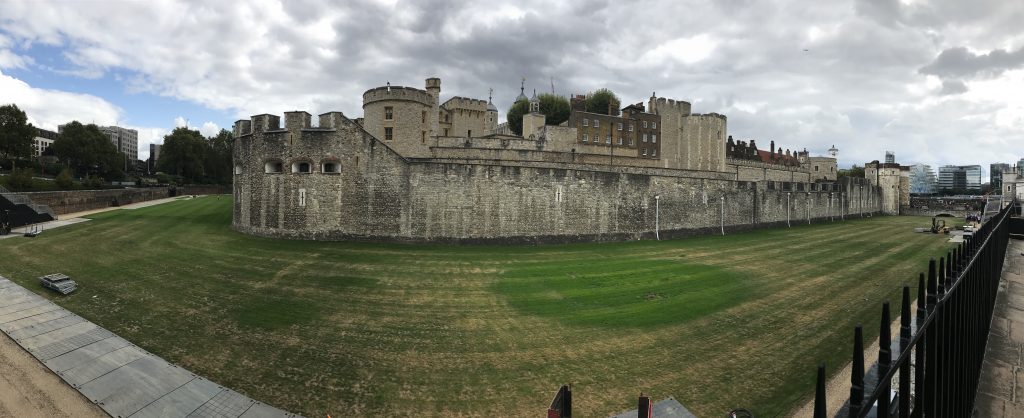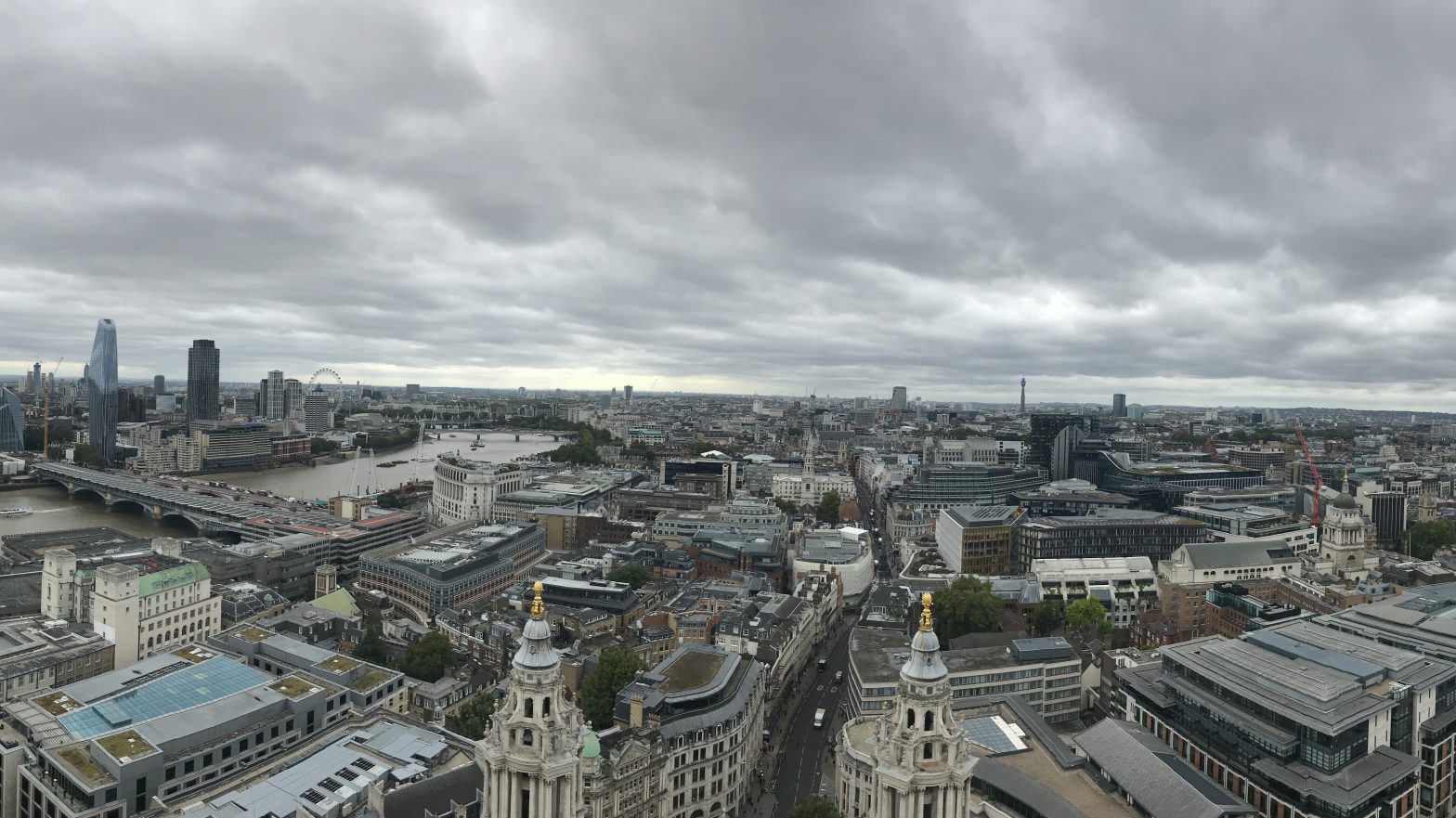Last week I visited St. Paul’s Cathedral, or should I say St. Paul’s V. The very first St. Paul’s was founded by a monk in 604 AD. Now, in the middle of a sea of lumbering office buildings, rises the unmistakable dome of St. Paul’s Cathedral. The architect, Christopher Wren, oversaw the construction of this St. Paul’s after the Great Fire of London damaged the fourth installment of the cathedral in 1666. This cathedral is grand. Stained glass windows dot across the intricately carved walls as chandeliers hang next to smooth and towering pillars. It’s easy to imagine Princess Diana marrying Prince Charles under the iconic dome back in 1981.

It’s dizzying staring up at the arched ceiling, and climbing to its top takes your breath away: literally and figuratively. Winding staircases carry you 365 feet in the air (one foot for every day of the year), and deposit you into the best view of the city. Standing at the top you can see the River Thames, the Globe Theater, the London Eye… name a landmark and you can pick it out. Since my visit to St. Paul’s, it seems like I can always find it somewhere in the skyline — like a warm friend in a crowd of thousands.

As common as churches are in London, the population is extremely secular. Unlike politicians in the United States, one of my professor told me revealing your religious affiliations as a member of Parliament would be political suicide. But within the government, Great Britain has its own holy denomination: the monarchy. It was believed that the position of king or queen is ordained by God, therefore the monarch was the highest power in England, if not the world. While Queen Elizabeth II no longer dictates every law of the land, like her predecessors, the sanctity of her position pulses through the city. The epicenter of her rule is in Buckingham Palace, or “the office” as she likes to call the mansion. Since the Queen is away on vacation, a few of the State Rooms in the palace are open to the public. I took an evening tour of these rooms, and boy, are they posh. Gold or brass covers the floral moldings in every room; countless trinkets from the Royal collection sit atop the mantle pieces; paintings of family members deck the walls like an extravagant and expensive photo album.

As I looked up at Sir George Hayter’s painting of Queen Victoria’s coronation, the weight the royal family bears on this country began to sink in. Staring at the crown sitting atop her head, I thought back to my tour of The Tower of London. Behind great stone walls sits the Crown Jewels worn by past kings and queens at their respective coronations. The row of glittering crowns were unreal. Some date back to the 1600s, while others aren’t even 100 years old yet. These are England’s most prized possessions, and each is within arm’s reach — if only there hadn’t been thick panes of glass between the delicate fur lining and my fingertips.

The larger crowns were magnificent, but it was the smallest of them all that took my breath away. Separate from the rest sat Queen Victoria’s iconic miniature diamond crown, made to be worn with her mourning veil after the death of her husband, Prince Albert. This little star brought the royal world crashing into perspective. Whether the monarchy is holy is debatable, but by God, it is so extraordinarily special. Whether you’re walking through the streets of London, down the aisle at St. Paul’s Cathedral, or through the Queen’s own “office,” you can’t help but imagine the essence of monarchs’ steps glowing under your feet. While the people of the city may be non-religious, London’s holiness streams through the cobblestones like light shines through stained glass windows.



